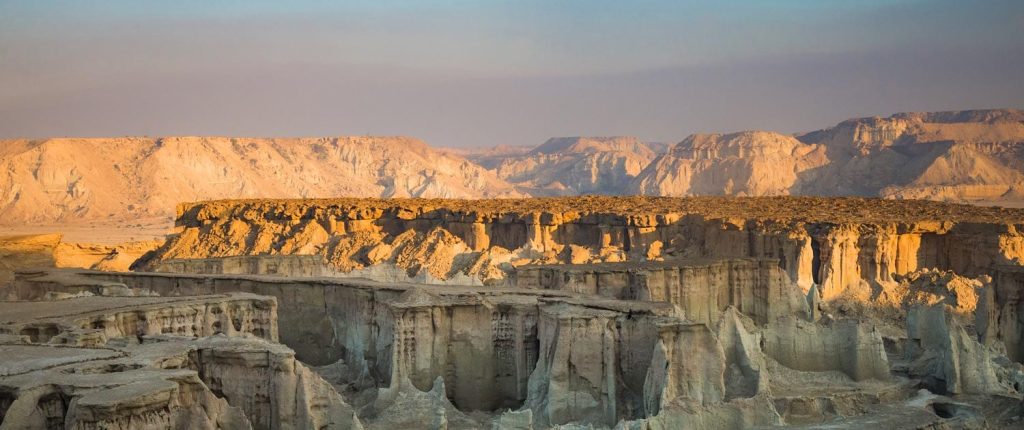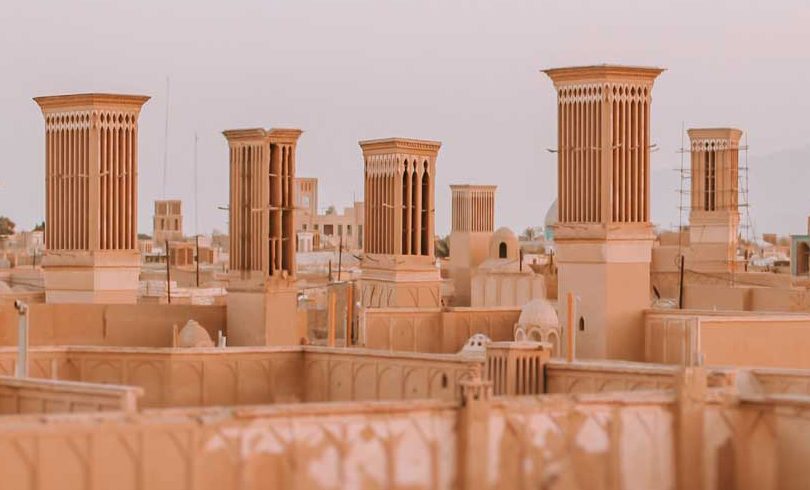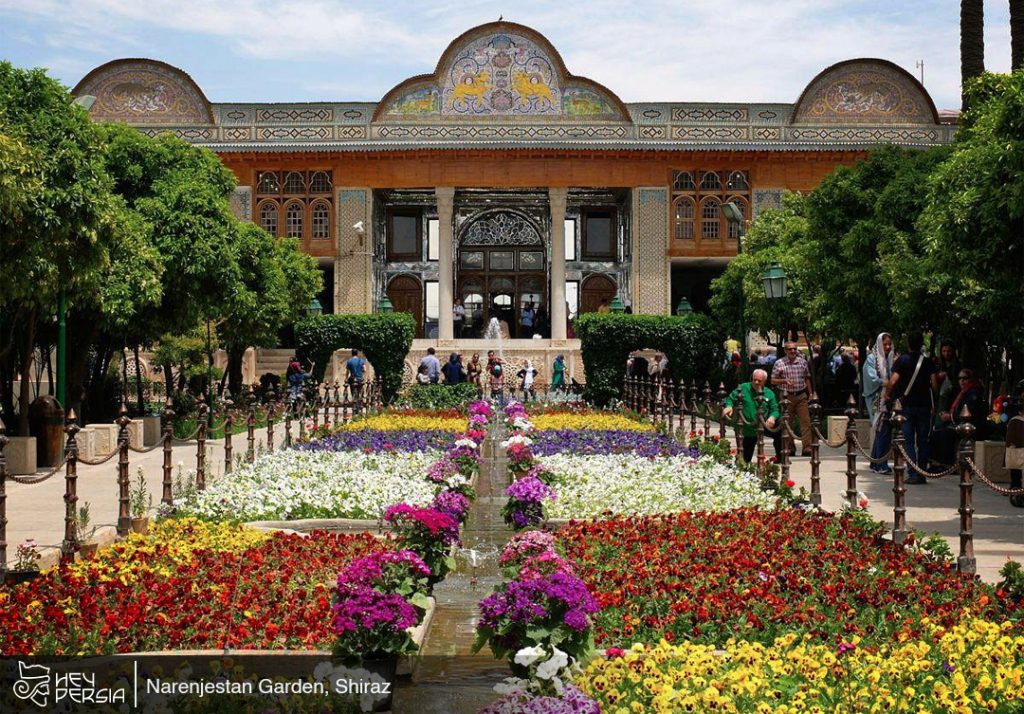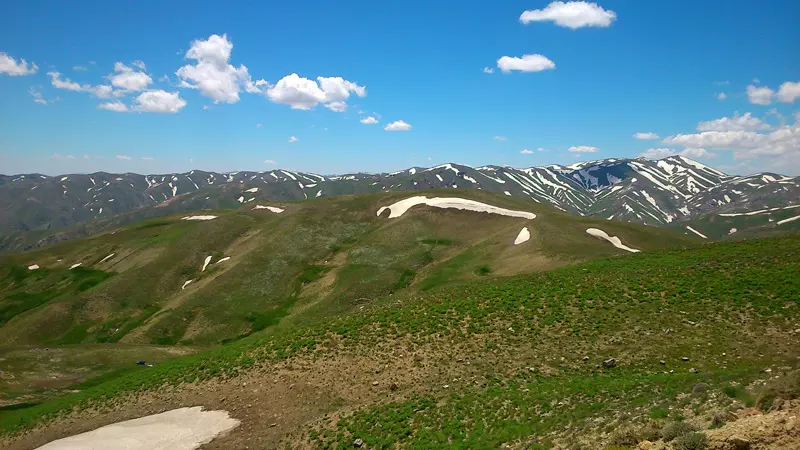Iran’s hottest desert of Lut which is definitely a must-see type, widely referred to as Dasht-e Lut, is a large salt desert located in the provinces of Kerman and Sistan and Baluchestan, Iran. It is the world’s 34th-largest desert,. It was included on UNESCO’s World Heritage List on July 17, 2016. Furthermore, you can read more about iran hottest deserts. Learn more at Hey Persia.
The name is driven from ‘Lut’ which means bare and empty in Persian and ‘dasht’ which means plain in Persian. The surface of its sand has been measured at temperatures as high as 70°C making it one of the world’s driest and hottest places.
Why seeing the Lut, Iran’s hottest desert?
Visiting Iran’s hottest desert of Lut, can kind of help you avoid the crowds and literally enjoy a peaceful experience. For definitely many of us, when we for the most part think of the Desert, we think of those enchanting photos we have seen of the sun rising and setting amongst wildflowers and other-worldly wildlife.
A sea of golden waves that appears to have no beginning and no end. You can show pictures and write words but portraying that feeling is harder. Perhaps it’s one of those things, like seeing the ocean for the first time, that you need to experience for yourself.
The landscape of hot desert of Lut
In these amazing sand hills One of the most diverse views that can particularly be seen is the Nebka or sand pots in a subtle way. This amazing phenomenon for the most part is one of the unique attractions of the Lut desert.
Sand dunes that surround shrubs like pots mostly are up to 10 meters high. Lut desert sand pots are considered to be the tallest Nebka species in the world. Further showing how Lut desert sand pots are considered to be the tallest Nebka species in the world.
Sky full of stars in Lut desert
The difference between day and night temperatures is noticeable in Lut desert. One of the reasons for the decrease in desert temperature at night really is the lack of suitable plants
The thing that really makes a significant difference between Lut and really other desert regions of the world is the presence of 120-day winds of Sistan in summer, which makes the temperature does not increase during the day and does not decrease at night in a very major way.
the night sky of the desert is like a paradise for astronomers, and Lut is more pristine than other deserts in Iran, inviting photographers, astronomers and researchers or maybe having a band singing a famous song for you.
Spider canyon
Spider Canyon is the largest canyon in the Lut Desert, located 130 km from Shahdad. Many permanent and seasonal rivers of the Lut Desert, including the Kalshur River, flow into this canyon. This place is Spider Canyon because of the animals that live in it.
This is where very dangerous tarantulas with deadly poisons live, such as solar tarantulas and camel tarantulas. Spider Canyon is one of the most pristine places in the Lut Desert, which still retains its natural state despite the many tourists who come to visit this place.
The must-see legacy
The Kaluts or Yardangs are famed as an unbeatable Natural Phenomenon of the Lut Desert. The Shahdad region, where holds the stunning and beautiful Kaluts, is the only Iran UNESCO natural world heritage site.
Kaluts are bedrock features by the dual action of wind abrasion of dust, sand, and deflation, which is the removal of loose material by wind turbulence.
Most prominent wind that eliminates the walls of the Kaluts is the 120-day wind of Sistan. The Kaluts region is located 43 kilometers from Shahdad and has an average width of 80 km and an average length of 145 kilometers.
Due to the appearance of the region, the Kaluts is famous as the world’s largest cloddish town. Because of the shape of Kaluts, this landscape has titled the imaginary city.
Rivers running free
Kalshour River or Shor river (salty river) literally is the only permanent river in the heart of the Lut Desert, which is very full of water over the year in a subtle way.
Kalshour River is another landmark of the Lut desert in Kerman province. It is demonstrating how kalshour River or Shor river (salty river) kind of is the only permanent river in the heart of the Lut Desert, which essentially is definitely full of water over the year, fairly contrary to popular belief.
The river is highly acidic definitely due to the passage of desert areas, so for the most part avoid touching the river water.
The cultural attraction of Iran’s hottest desert of Lut
The Shafiabad village is located on the road of Nehbandan-Shahdad in. The village includes culture, traditions, very local cuisine, and handcraft that will specifically attract tourists to the area, which is quite significant.
The proximity of this village to the Kalut of Shahdad made the village the center of this eco-museum.
One of the kinds of other tourist attractions of the village definitely is the Shafiabad caravanserai that dates back to the Qajar era, showing how the village includes culture, traditions, pretty local cuisine, and handcraft that will for the most part attract tourists to the area.

Wait there is more!
Sirch village is a beautiful Paradise in the heart of the Iran’s hottest desert of Lut. The lush and beautiful paradise in the hot and burning desert seems somewhat outlandish. It’s by traveling to the Sirch Village, you can experience cold weather just a few kilometers far away from the hottest part of the world.
Only in this area, you can experience the possibility of snow near the hot desert. The Sirch village located 80 kilometers from Kerman city. You can get there via the Kerman-Sirch road or Shahdad-Sirch road.
The most outstanding tourist attractions of the village are the old Cedar with over a thousand years old. It has been a wonder on Iran’s natural heritage. A hot spring with impressive therapeutic properties, and the biggest stone tunnel in the Middle East. As well as, you can buy Pomegranates from the village in autumn.
When to visit Iran hottest deserts?
The best time to have a perfect trip to the Lut Desert is in Spring and Autumn. To benefit from the picturesque landscape of Kaluts at its magnificent beauty, we highly recommend you to get there at the beginning of the day or sunset.
Feeling tired Iran hottest deserts?
As mentioned before, there is no need to be worry about your accommodation. If you intend to travel to the Lut Desert, you can stay in the Kalut Local House, Kavir Ecolodge, and Vakilabadi traditional house.
Otherwise, you can go to the Shahdad Desert Camp, located 10 kilometers from the Shafiabad village, to cast up your tent along the flat spot provided there and sleep under clear skies crowded with stars.








